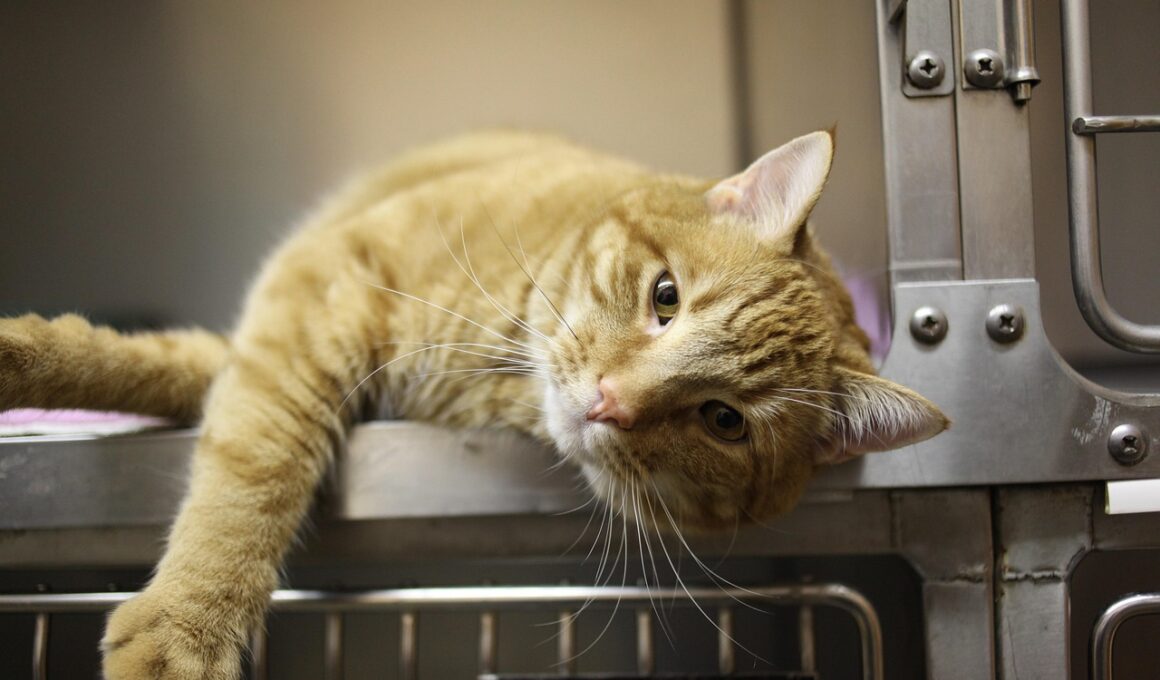How Vet Partnerships Shape the Coverage Benefits of Cat Insurance
Understanding cat insurance is essential for every pet owner, particularly how partnerships between veterinary clinics and insurance companies enhance coverage benefits. Such collaborations ensure that insurance plans are tailored to meet the specific needs of cat owners. This custom approach is driven by the valuable insights veterinary professionals provide regarding healthy practices and potential health issues specific to feline companions. A partnership can also facilitate better communication between pet owners and insurers. This communication allows clients to gain better insights into the reasoning behind coverage limitations and exclusions. When an insurance company works closely with vets, it often results in policies that cover preventive treatments that are frequently neglected in standard plans. Consequently, it encourages cat owners to prioritize regular vet visits, leading to healthier pets. Furthermore, these partnerships often result in discounts or incentives that make maintaining insurance more affordable for clients. Overall, understanding the dynamics of these partnerships can empower pet owners to choose the best insurance provider for their furry friends, ensuring that they receive optimal care and financial support to manage unexpected veterinary expenses effectively.
In evaluating different insurance policies, it is worth examining how vet partnerships contribute to the value-added services offered by insurance companies. One significant advantage includes the increased availability of specialized veterinary care, often encouraged through these partnerships. For instance, when an insured cat requires specialized treatments or consultations, their owner’s vet can easily liaise with the insurance company to ensure claims are processed promptly. This seamless communication can significantly reduce stress for both the pet and the owner when navigating unexpected medical situations. Additionally, many pet insurance providers now offer health plans designed explicitly for preventive care, integrating the vet’s recommendations into coverage options. This proactive approach encourages pet owners to invest in regular check-ups and screenings, ultimately improving their cat’s overall health and longevity. As a result, these initiatives not only benefit cats directly but also provide financial relief for pet owners who might otherwise hesitate to seek necessary veterinary care. Overall, vet partnerships are crucial in shaping insurance offerings that prioritize preventive care, addressing issues before they escalate into severe health concerns.
Another critical aspect of vet partnerships is their role in educating pet owners about their insurance options and health care choices. Many veterinary clinics have taken the initiative to inform their customers about insurance policies, highlighting key features that they should consider. This may include coverage for chronic illnesses, accidents, or breed-specific health conditions that certain cat breeds might be more prone to. When conversations about insurance happen at the vet, they can help dispel common myths regarding pet insurance that deter many owners from considering it. Furthermore, veterinary staff often share experiences from other clients that illustrate the importance of having comprehensive coverage. Moreover, these educational efforts can lead to better pet health management overall, as owners become more aware of their cats’ needs and what insurance covers. Participating vets can share their expertise in selecting optimal plans that complement regular health maintenance while safeguarding against potential financial burdens. Such efforts ultimately underscore the benefit of partnership, as informed clients are often more confident in their decisions regarding their cat’s health and financial well-being.
Enhancing Claims Processes
Efficient claims processing is another area where vet partnerships shine, addressing one of the perennial concerns pet owners face regarding insurance. When veterinarians collaborate with insurance providers, they streamline the claims process. For instance, when a vet submits claims directly to an insurance company on behalf of a cat owner, it reduces the burden on the owner to gather records and submit forms independently. The result is a more efficient and transparent claims experience that can lead to faster reimbursements. Moreover, many animal hospitals are increasingly using technology to enhance this interaction, making data-sharing almost instantaneous. As a result, clients can experience less downtime regarding reimbursements, allowing them to focus on their pet’s health instead of navigating tedious paperwork. Such arrangements also ensure that vets are familiar with the types of procedures and treatments that are fully covered within various insurance policies. By facilitating a smoother path for income recovery, these collaborations enhance overall satisfaction for both vets and clients who are invested in their pets’ welfare.
Furthermore, these partnerships often lead to the development of tailored health plans that can better fit the needs of individual cats. Vets can advise insurance companies about the most common ailments or preventative measures based on their clients’ experiences. This insight is instrumental when designing policies that offer comprehensive coverage while remaining financially viable. For example, if a particular breed is predisposed to specific health issues, insurance plans can be adjusted to include necessary treatments as part of their benefits. This customization not only provides better peace of mind for cat owners but also promotes a healthier feline population through consistent vet care. By aligning coverage with actual veterinary practices, insurance providers can create policies that ensure both health today and savings tomorrow. Consequently, the role of veterinary professionals goes beyond treatment; they become crucial partners in shaping responsible coverage options that address real-world needs. This collaboration is highly beneficial as it focuses on both maintaining the health of the pet and ensuring financial safeguards for the owners over time.
Promoting Preventive Health Care
One of the biggest benefits resulting from these partnerships is the promotion of preventive health care among insured cats. Vets play a pivotal role in advocating for preventative measures, such as vaccinations, regular check-ups, and dental care, which can be highlighted in insurance policies. When insurance providers collaborate closely with local veterinarians, preventive health care becomes more accessible. Many owners hesitate to invest in preventive treatments due to concerns about costs, but when these services are covered or partially subsidized, it leads to better health outcomes. To maximize the effectiveness of these health plans, vets offer educational workshops or informational sessions in partnership with insurance companies. These sessions inform clients about the importance of routine care. Healthier cats not only enjoy longer lives but also decrease the overall health care costs for pet owners and insurance providers. Overall, these initiatives underscore the mutual benefits of vet partnerships. By prioritizing preventive health care, they not only improve cats’ well-being but also foster responsible pet ownership within the community to minimize future risks.
Looking ahead, the evolution of cat insurance will likely continue to rely heavily on these veterinary partnerships for their improvement. As the pet insurance industry expands, collaboration with veterinary professionals will be critical in ensuring that coverage remains relevant. By leveraging veterinarians’ expertise, insurance providers can stay ahead of emerging health trends and adjust their policies accordingly. This adaptability can lead to the introduction of innovative coverage options that reflect shifts in pet demographics or emerging health challenges. Moreover, as pet owners become increasingly knowledgeable about the benefits of comprehensive coverage, they will likely push for policies that prioritize collaboration with trusted veterinary partners. As both industries evolve, there will be a more seamless integration of technology and health care approaches that benefit cat owners. When insurers and veterinarians work together effectively, pet owners gain peace of mind through streamlined services. Additionally, dynamic collaborations can foster trust, potentially changing how pet insurance is perceived overall. In conclusion, the evolving landscape of cat insurance shows that vet partnerships play an indispensable role in shaping the future of coverage benefits.
The relationship between veterinary practices and cat insurance companies creates a foundation for better services and benefits. When owners understand that their cats are cared for based on the partnerships that insurance companies nurture with vets, it leads to heightened trust. This trust is invaluable in the realm of pet care, where veterinary experts provide insights for developing policies. By assuring pet owners that their cats’ health is prioritized through adequate insurance coverage, vets can significantly influence purchasing decisions. Lastly, the integration of wellness plans that encompass both preventative care and holistic treatments is becoming popular thanks to these alliances. The potential to cover a wide range of treatment options increases pet owners’ willingness to invest in comprehensive insurance. By effectively communicating the value of these partnerships, insurance companies and veterinary practices not only enhance coverage options but also promote responsible pet ownership. Ultimately, these alliances ensure that cat owners are informed when making decisions affecting their pets’ health and financial wellness. The future of cat insurance is bright, with veterinary partnerships leading the way towards a better understanding of pet health insurance dynamics.


